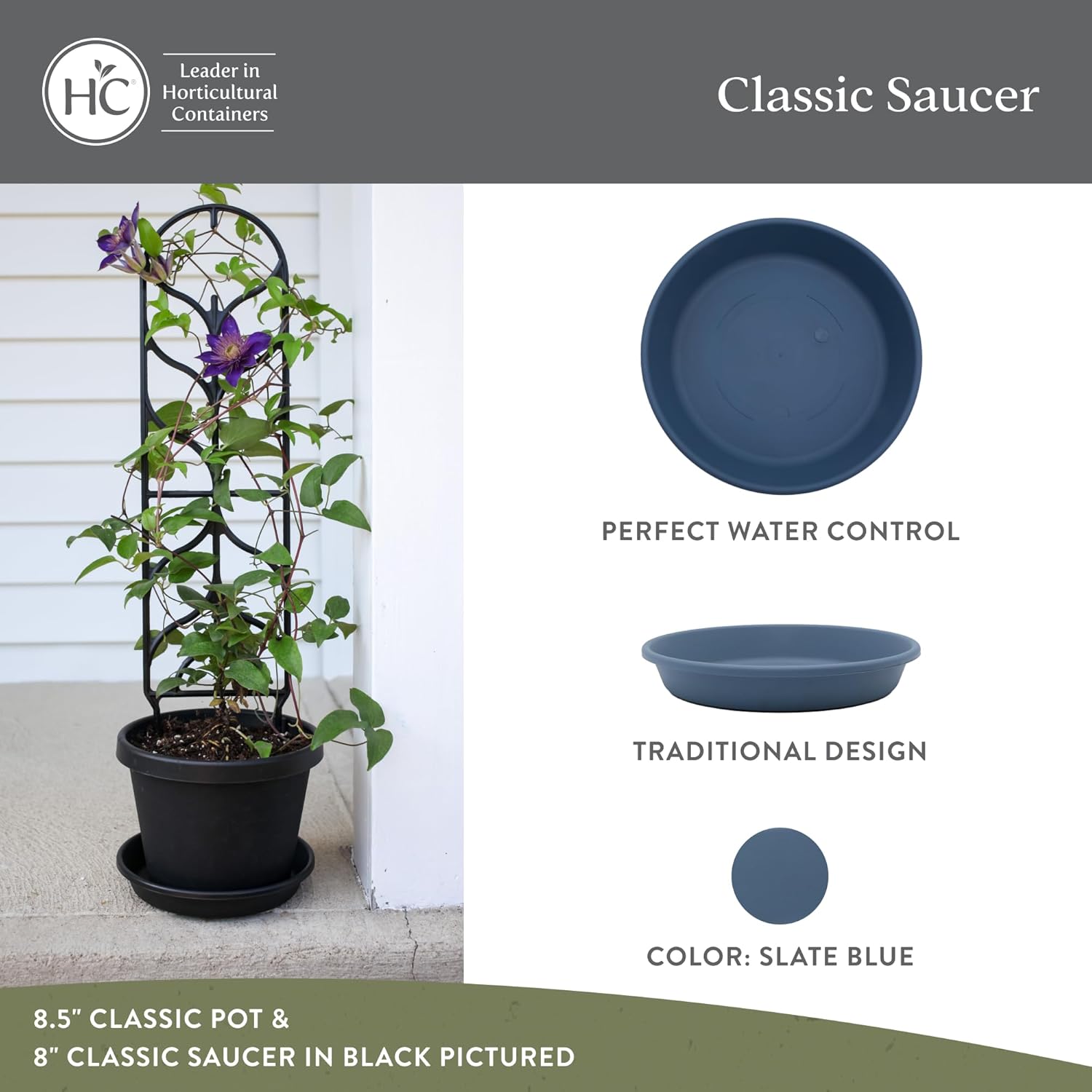Unique flowers can completely transform your garden into a captivating and conversation-starting oasis. Whether you’re a seasoned gardener or just beginning to play with petals and pots, incorporating unusual blooms with bold shapes, unexpected colors, or rare growing habits can elevate your landscape from average to extraordinary. These extraordinary plants aren’t just eye-catching—they often attract butterflies, hummingbirds, and curious onlookers. If you’re craving something different from the usual daisies and tulips, you’re in the right place.
In this guide, we’ll highlight some of the most strikingly unique flowers that thrive in gardens across various climates. Each entry includes essential growing tips, fun botanical facts, and creative ideas for incorporating them into your outdoor space or floral arrangements.
Table of Contents
Globe Thistle (Echinops ritro)
With its silvery-blue, globe-shaped blooms perched atop spiny stems, Globe Thistle brings a bold architectural touch to garden beds. These perennial plants thrive in full sun, tolerate drought, and are loved by bees and butterflies. Reaching 2 to 4 feet tall, their spherical blooms stand out against softer flower shapes, making them excellent for both fresh and dried bouquets.
- Growing Zones: 3–8
- Bloom Time: Midsummer to late summer
- Soil Needs: Well-drained, average soil
- Garden Use: Borders, pollinator gardens, dried floral crafts
💡 Pro Tip: Deadhead spent blooms to encourage reblooming and control self-seeding.
Allium Bulgaricum (Nectaroscordum siculum)
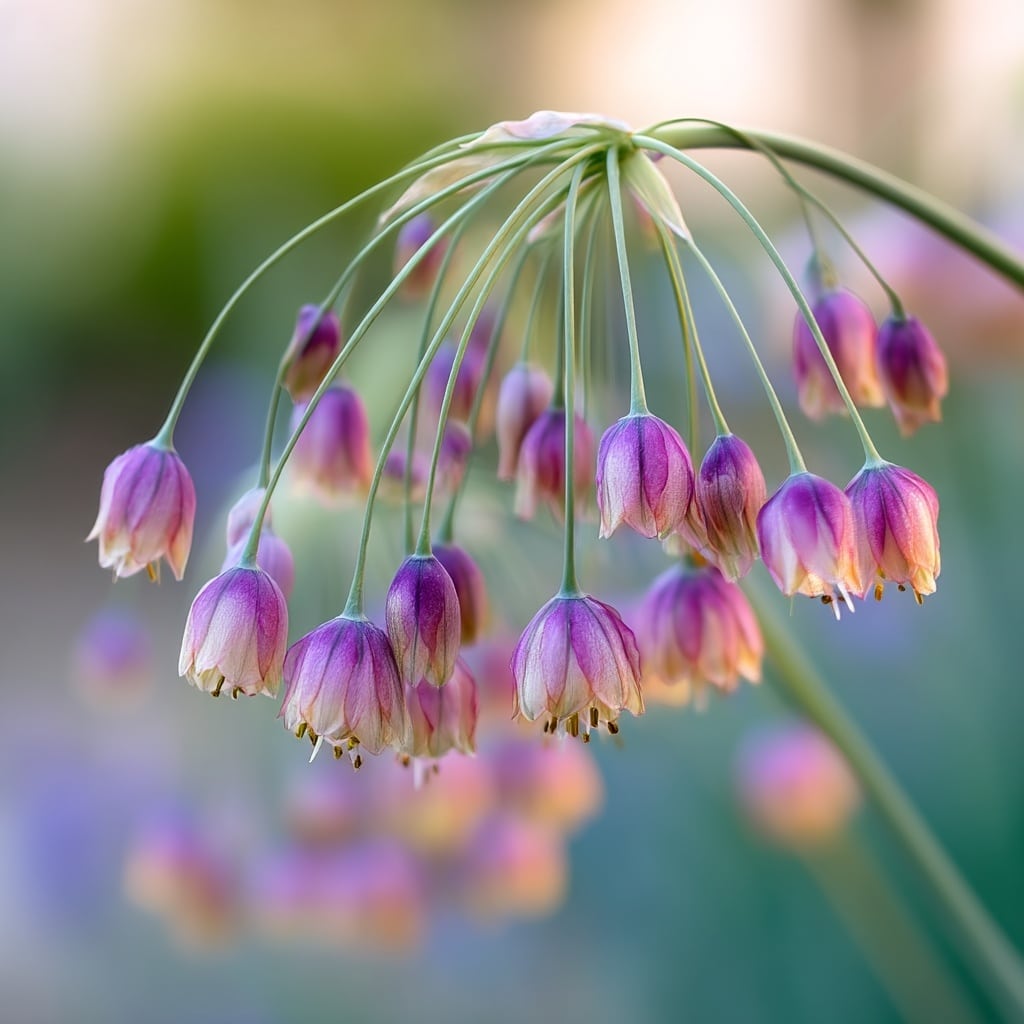
Also known as Mediterranean Bells or Sicilian Honey Lily, this ornamental allium is a head-turner. It begins with upright buds that gracefully droop into hanging bell-like blooms in shades of cream, pink, and green. It adds a soft, whimsical motion to garden beds and works beautifully in spring bouquets.
- Growing Zones: 4–9
- Bloom Time: Late spring to early summer
- Sun Needs: Full sun to light shade
- Plant Height: 24–36 inches
🌿 These unique flowers are deer-resistant and surprisingly easy to grow—perfect for low-maintenance gardeners looking for visual drama.
Bat Face Cuphea (Cuphea llavea)
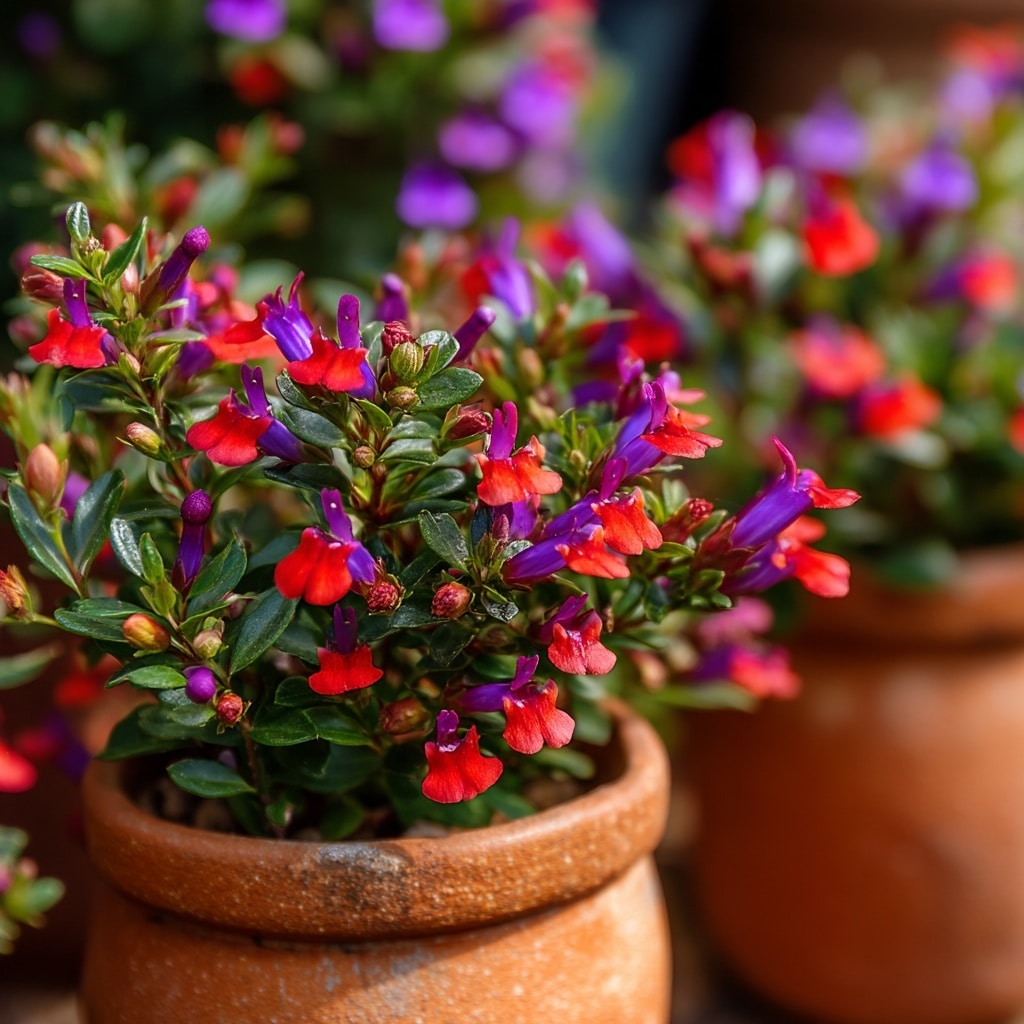
This playful flower gets its name from the vivid bat-like shape of its red and purple blooms. Bat Face Cuphea is a compact, drought-tolerant perennial that grows well in containers, beds, or as edging. It blooms continuously from spring through fall and draws in hummingbirds like magnets.
- Growing Zones: 9–11 (or annual elsewhere)
- Sun Needs: Full sun to part shade
- Bloom Period: March through October
- Size: 2–3 feet tall, 3 feet wide
✂️ Pinch back stems early in the season to promote fuller growth and more flowers.
Cat’s Whiskers (Orthosiphon stamineus)
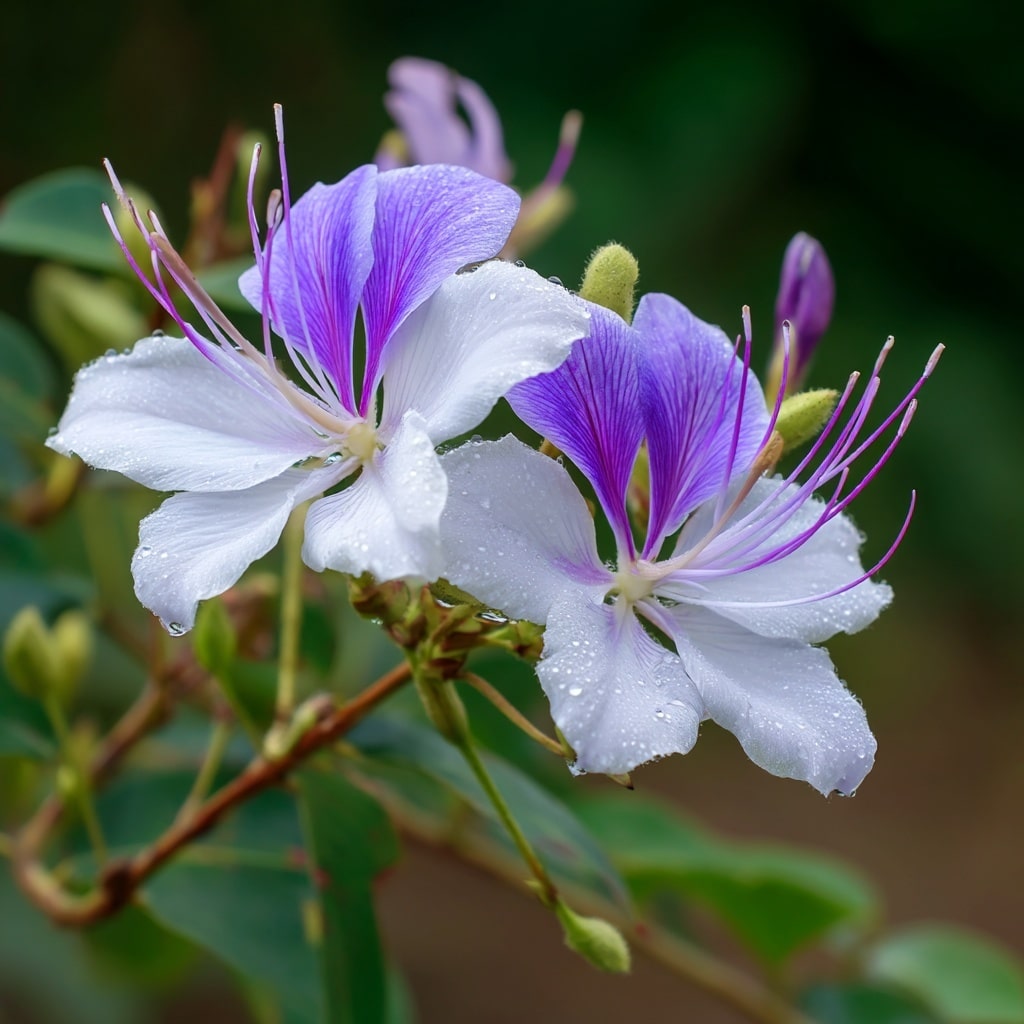
Native to Southeast Asia, Cat’s Whiskers are tropical perennials named for their long, whisker-like stamens. These airy, lavender or white orchid-like blooms attract pollinators and also double as a herbal tea ingredient. It belongs to the mint family and grows well in warmer climates.
- Growing Zones: 9–11
- Plant Size: 2–3 feet tall
- Sunlight: Full sun preferred
- Soil: Moist but well-drained
🍵 Fun fact: The leaves are traditionally used in herbal teas to support kidney health.
Family Jewels Milkweed (Asclepias physocarpa)
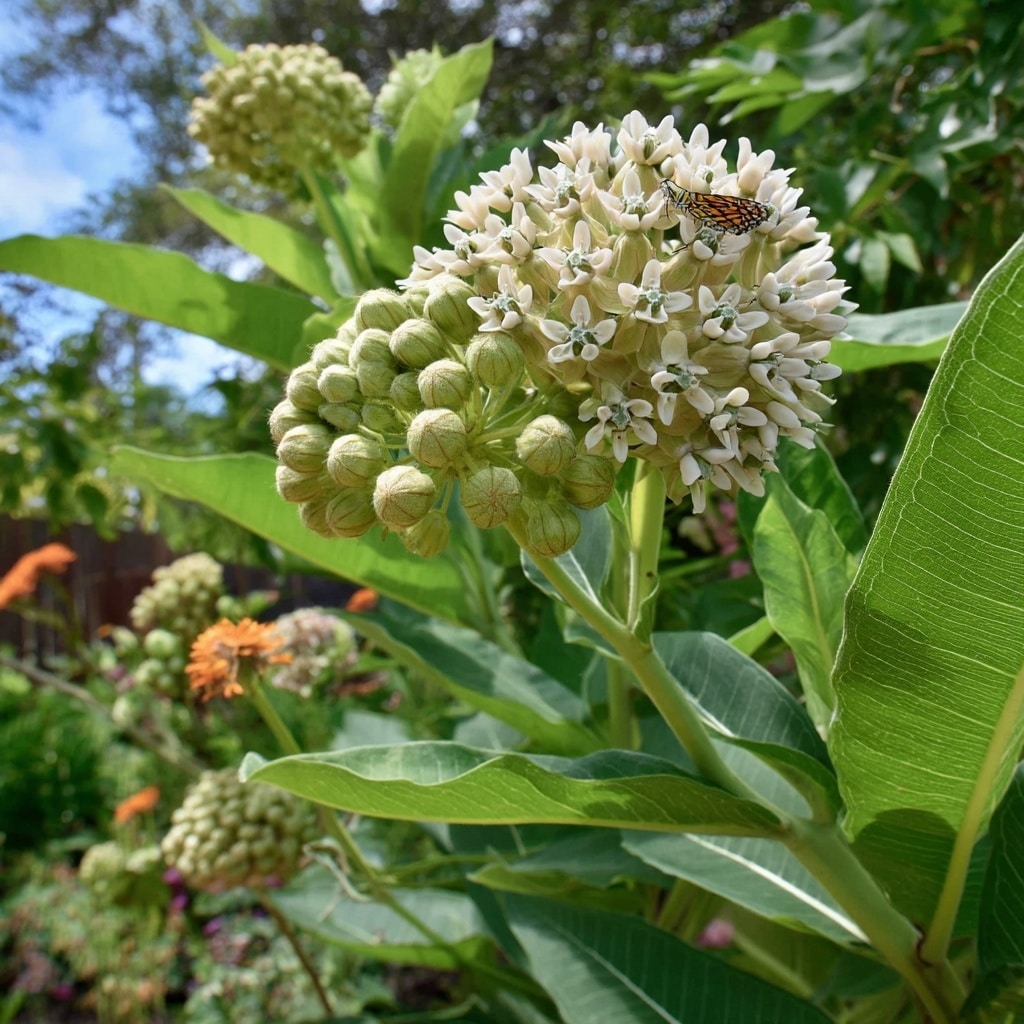
If you’re after a flower that doubles as a butterfly magnet and conversation starter, look no further than Family Jewels Milkweed. This tropical milkweed features clusters of creamy white, orchid-like blooms followed by strange, balloon-like seedpods covered in soft bristles—earning it its quirky name.
- Growing Zones: 7–10
- Height: Up to 6 feet
- Sun Needs: Full sun
- Wildlife Benefit: Monarch caterpillar host plant
🦋 Planting milkweed supports local butterfly populations, especially endangered Monarchs, by providing critical habitat and food.
Spanish Flag (Mina lobata)

This climbing annual dazzles with fiery ombré flowers that fade from red to orange to creamy white—resembling a flickering flame. Also called Firecracker Vine, Spanish Flag grows fast and vigorously, making it a showy option for trellises, fences, or arbors.
- Growing Zones: Grown as annual
- Height: 10–20 feet
- Bloom Period: Mid-summer to fall
- Light Needs: Full sun to part shade
🌞 To encourage flowering, provide support early and keep it well-watered during dry spells.
Hot Poker (Kniphofia)
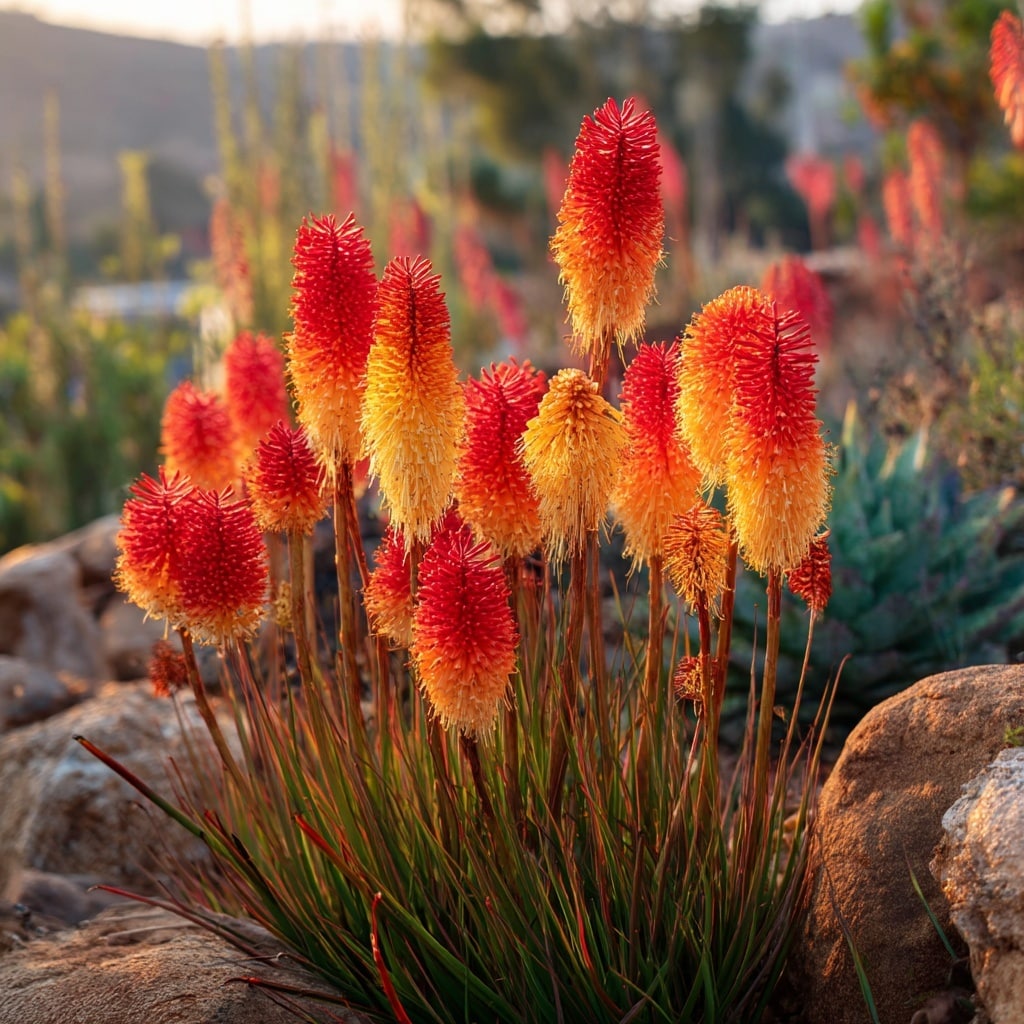
Known as Red Hot Poker or Torch Lily, this striking plant features rocket-like spikes in blazing red, orange, or yellow hues. These bold vertical flowers are irresistible to hummingbirds and bloom best under hot, sunny conditions.
- Growing Zones: 5–10
- Height: Up to 3 feet tall
- Soil Needs: Well-drained soil
- Drought Tolerance: High once established
💧 Be careful not to overwater—excess moisture can lead to crown rot, especially in cold climates.
Liatris (Liatris spicata)
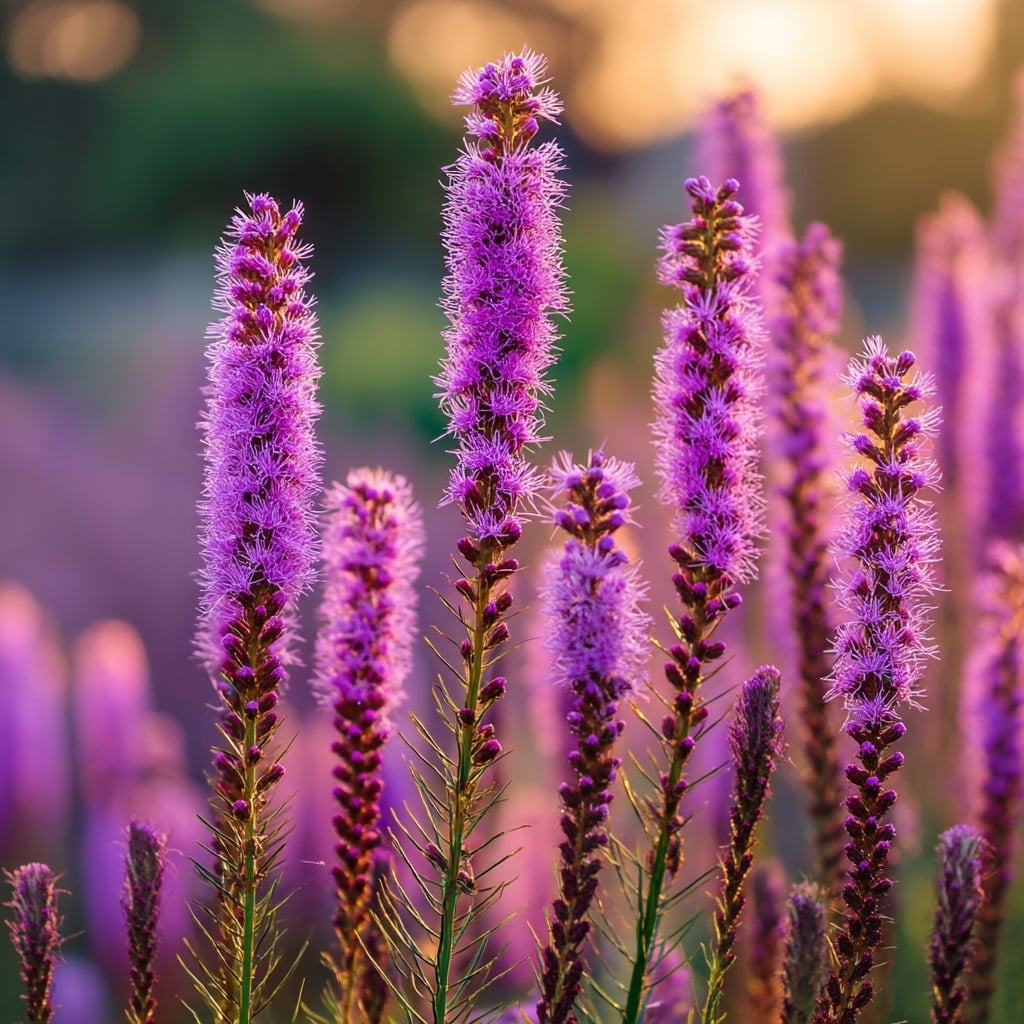
Also called Blazing Star or Gayfeather, Liatris is known for its upright purple or white flower spikes that bloom from the top down—an uncommon trait in the plant world. It adds height, texture, and pollinator appeal to any garden.
- Growing Zones: 3–9
- Bloom Season: Mid-to-late summer
- Pollinator Attractant: Bees, butterflies, hummingbirds
- Uses: Cut flowers, wildflower gardens, naturalized areas
✂️ Liatris holds up well in bouquets and has an impressive vase life, making it a florist favorite too.
Love-in-a-Mist (Nigella damascena)
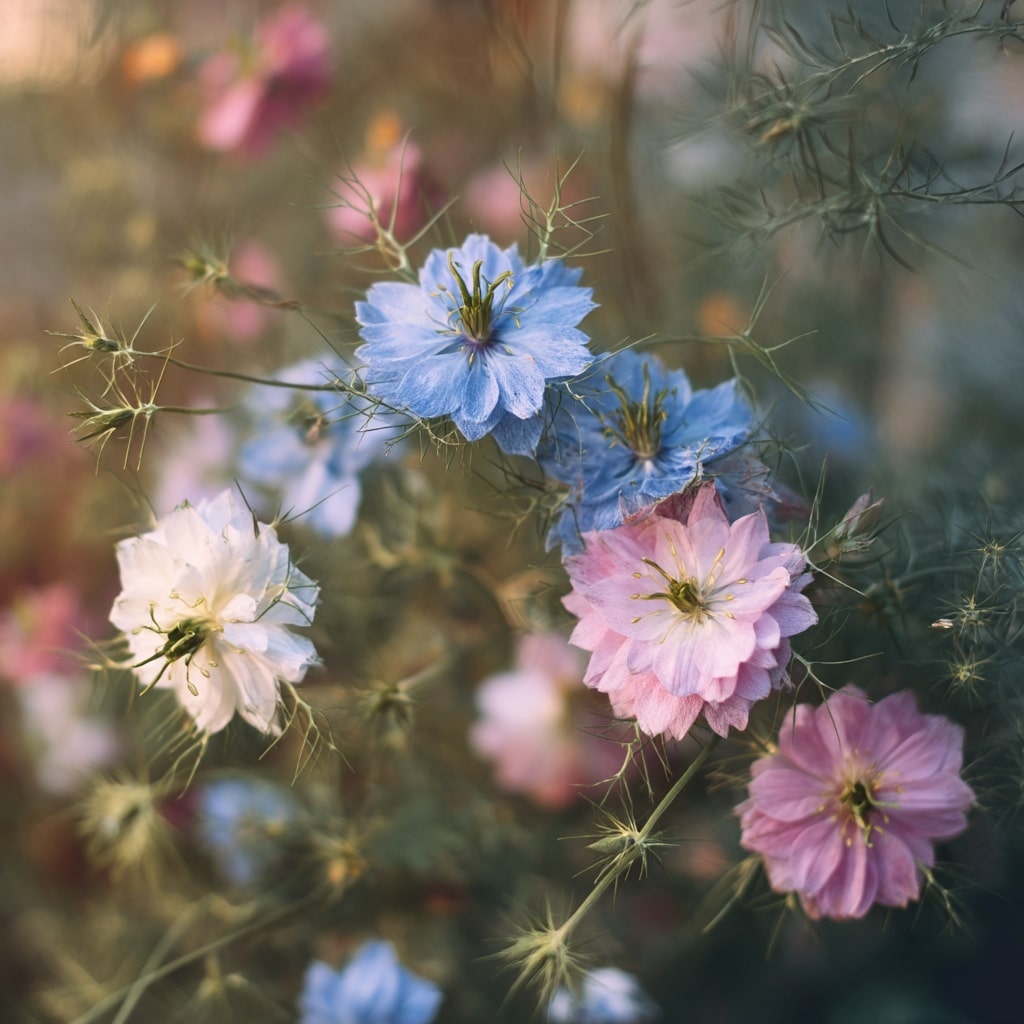
This delicate heirloom flower is often spotted in old-fashioned cottage gardens. Love-in-a-Mist earns its name from the soft, fern-like foliage that seems to cradle its dreamy blue, pink, or lavender blooms. It’s as charming as it is self-sufficient, often reseeding itself year after year.
- Growing Zones: Annual in all zones
- Height: 12–24 inches
- Sunlight: Full sun to partial shade
- Bloom Time: Late spring through summer
🌸 For extended flowering, sow seeds every few weeks during spring. The dried seedpods also add rustic charm to bouquets.
Bird of Paradise (Strelitzia reginae)

Few flowers are as instantly recognizable as the Bird of Paradise. With blooms resembling tropical birds in flight, this vivid orange and blue flower brings a burst of exotic energy to warm-weather gardens or indoor containers. It’s a true showstopper that’s surprisingly low-maintenance.
- Growing Zones: 10–12 outdoors; houseplant elsewhere
- Light Needs: Full sun to bright indirect light
- Size: 3–5 feet tall and wide
- Bloom Time: Late winter to early summer
🪴 Indoors, make sure the plant gets plenty of bright light and regular watering to thrive.
Anthurium (Anthurium andraeanum)

Nicknamed the Flamingo Flower, Anthurium is a tropical beauty known for its glossy, heart-shaped spathes in vibrant red, pink, or white. These bold flowers work well indoors or outdoors in frost-free climates and add lush, romantic vibes to any garden bed or bouquet.
- Growing Zones: 10–12 or houseplant
- Light Requirements: Bright, indirect light
- Soil: Moist but well-drained
- Bloom Duration: Long-lasting flowers year-round in proper conditions
🌿 They’re great air-purifiers too, making them a stylish and useful indoor plant.
Pincushion Protea (Leucospermum)
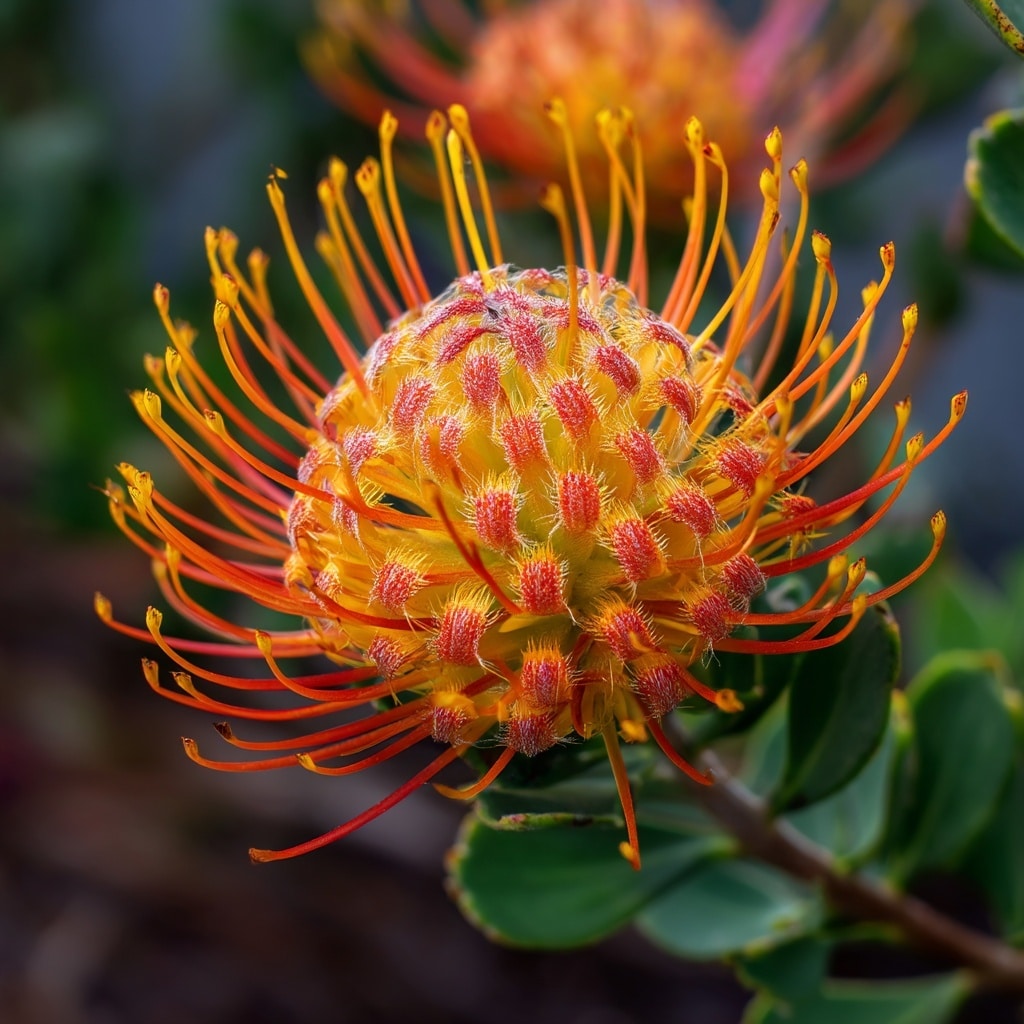
With their wild, sculptural heads that resemble a burst of pins from a cushion, Pincushion Proteas are undeniably eye-catching. Native to South Africa, they thrive in dry, sunny environments and add striking form and texture to bouquets or xeriscape gardens.
- Growing Zones: 9–11
- Bloom Time: Spring to early summer
- Height: 4–6 feet
- Soil: Sandy, acidic, well-drained
🌺 Give them room to breathe—good air circulation prevents fungal issues, especially in humid regions.
Orchids (Orchidaceae)

Elegant and mysterious, Orchids are beloved worldwide for their intricate blooms and symbolic beauty. There are thousands of species, but favorites like Phalaenopsis and Dendrobium are well-suited for beginner growers. With the right light and humidity, they can rebloom year after year.
- Growing Zones: Varies widely; houseplant-friendly
- Light Needs: Bright, indirect light
- Water Needs: Allow to dry slightly between waterings
- Bloom Season: Varies by species, often winter or spring
🌿 For beginners, start with Phalaenopsis hybrids—they’re forgiving and flower for months.
Conclusion
Adding unique flowers to your garden isn’t just about aesthetics—it’s about creating a space that reflects your personality, attracts wildlife, and sparks curiosity in every visitor. Whether you lean toward bold and tropical or soft and vintage, these standout plants will turn your garden into a masterpiece of nature.






